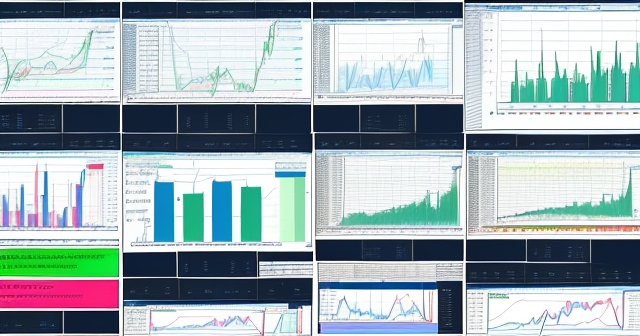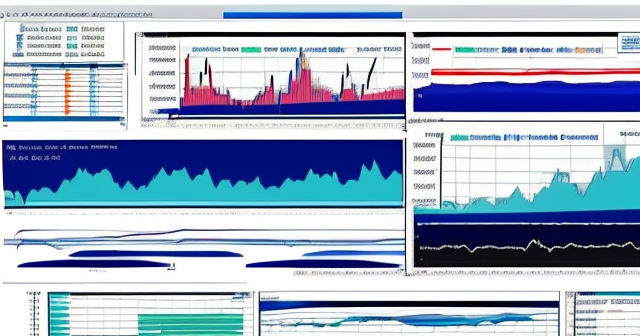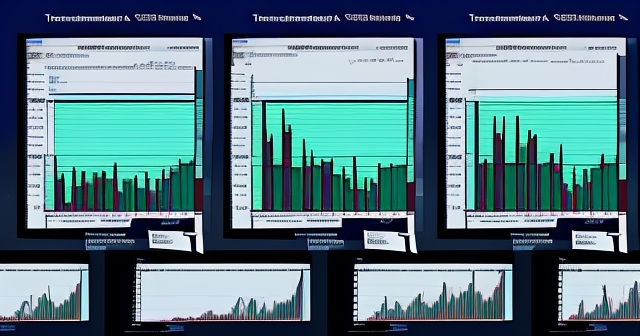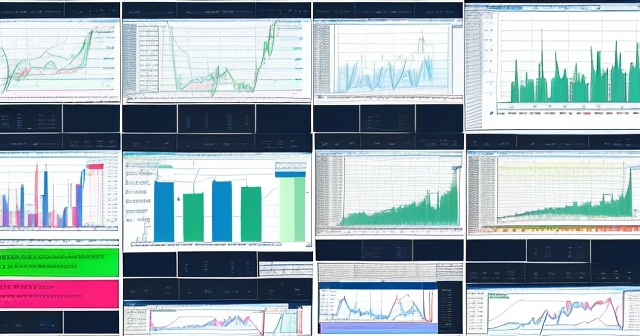Understanding US Earnings Season: A Critical Juncture for Investors
Welcome to our deep dive into the fascinating world of US earnings season. If you’re an investor, whether just starting out or looking to refine your approach, understanding this period is absolutely crucial. It’s not just about tracking company performance; it’s a dynamic time when the health of individual businesses and the broader economy is laid bare, offering invaluable insights that can inform your investment decisions. Think of it as the quarterly report card for the corporate world, but with far-reaching implications for the markets you trade in.
During earnings season, publicly traded companies release their financial results for the previous quarter. These reports detail key metrics like revenue, profitability (often measured by Earnings Per Share or EPS), and offer management’s perspective on the future through guidance. For us as investors, this is a primary source of fundamental data, complementing technical analysis and helping build a more complete picture of an asset’s potential trajectory.
This analysis will focus on recent earnings periods, particularly drawing insights from the most recent quarter, the guidance for the upcoming second quarter earnings season, and lessons learned from historical Q2 cycles. We’ll dissect the numbers, explore the underlying sentiment from corporate conference calls, and connect these micro-level reports to the broader macroeconomic forces at play. Our goal is to equip you with the knowledge to navigate these turbulent yet opportunistic periods with greater confidence and clarity.
Why is this important for you? Because earnings surprises, guidance revisions, and management commentary often act as significant catalysts for stock price movements. Being able to anticipate potential impacts or understand the drivers behind post-earnings volatility can give you an edge in the market. Whether you’re primarily a technical trader or a fundamental analyst, integrating earnings data into your process is key to mastering the market’s rhythms.
We’ll approach this like a guided tour, breaking down complex concepts and data points into understandable segments. So, let’s begin by examining the recent earnings landscape, particularly what the most recently completed quarter told us about the state of US corporations.

Let’s start with what’s fresh in our minds: the recently concluded Q1 2025 earnings season for the S&P 500 companies. What did the numbers tell us about the performance of America’s largest corporations? The data here painted a picture of underlying strength, at least on the aggregate level.
According to research from firms like FactSet, the S&P 500 demonstrated a significant
blended year-over-year earnings growth rate of 13.6%
for the first quarter of 2025. This figure is calculated by combining actual results from companies that have already reported with estimates for those yet to report. A 13.6% growth rate is not just a strong number in isolation; it marks the
second consecutive quarter of double-digit earnings growth
for the index. This suggests a sustained period of fundamental improvement or recovery for many companies.
This growth wasn’t concentrated in just one or two sectors, although some certainly contributed more than others. It reflected a broader positive trend across a significant portion of the market. For investors, seeing this kind of aggregate growth can build confidence in the overall health of the corporate sector, which often underpins market performance. It suggests that despite various economic headwinds, companies are finding ways to increase their profitability.
Understanding this recent performance sets the stage for interpreting future data, particularly the guidance being issued for the upcoming second quarter. The strength seen in Q1 2025 becomes the benchmark against which Q2 expectations and results will be measured. Was this growth sustainable? Were there underlying factors that might change in the next quarter? These are the questions the market begins to ask immediately after one earnings season concludes and the next begins to loom.
So, while the headline growth number for Q1 2025 was undoubtedly positive, we need to look deeper. What drove this growth, and were there any less visible signals within the reports and calls that might temper optimism about the quarters ahead?

While the overall earnings growth rate gives us a high-level view, digging into earnings surprises provides crucial nuance. An earnings surprise occurs when a company’s reported EPS or revenue differs from the consensus estimate provided by financial analysts. Positive surprises, where actual results exceed estimates, are generally viewed favorably by the market, while negative surprises often lead to price declines.
The Q1 2025 season was notable for its high surprise rates, continuing a long-standing trend where companies often manage to beat expectations. For S&P 500 companies,
78% reported actual EPS above the mean EPS estimate
. This beat rate is significantly higher than the
10-year average surprise rate of 74%
. Not only did a high percentage of companies beat, but they did so by a considerable margin. The aggregate actual EPS for Q1 2025 was
8.5% above the aggregate EPS estimate
at the end of the quarter. This is another strong indicator of corporate performance relative to expectations.
Revenue surprises also played a role, though typically less impactful on stock prices than EPS surprises. In Q1 2025,
62% of S&P 500 companies reported actual revenue above estimates
. While not as high as the EPS beat rate, it still indicates that a majority of companies exceeded analysts’ sales forecasts.
What does a high beat rate tell us? It could mean several things. Perhaps analysts were overly conservative in their estimates, or maybe companies were particularly effective at managing costs or driving sales in the quarter. Often, it’s a combination of both. Regardless of the exact cause, consistently high surprise rates highlight a degree of predictability or perhaps cautious guidance from companies themselves.
For you as an investor, tracking these surprise metrics is important. A company that consistently beats expectations might be demonstrating strong operational execution or effective guidance management. Conversely, a company that misses estimates repeatedly could be signaling underlying issues. These surprises often trigger immediate price reactions, making them a key focus point during earnings season. But numbers only tell part of the story. What were companies *saying* about the future?

Beyond the raw numbers in the earnings report, the qualitative information shared during earnings conference calls is incredibly valuable. These calls, where management discusses results and answers questions from analysts, provide context, color, and forward-looking insights. They are a crucial source for gauging corporate sentiment and identifying potential headwinds or tailwinds that companies are anticipating.
Analyzing the frequency of specific terms mentioned on these calls can serve as a powerful indicator of management’s focus and concerns. Firms like FactSet track the use of certain keywords to measure broad shifts in corporate sentiment. And the data from the Q1 2025 earnings calls revealed a significant shift in focus, particularly towards macroeconomic risks.
Think of these calls as a window into the collective corporate consciousness. What’s keeping CEOs and CFOs up at night? What opportunities are they most excited about? By listening to their language and the frequency of certain words, we can get a sense of the operating environment they perceive, which may not always be fully captured by the quarterly numbers alone.
This sentiment analysis goes hand-in-hand with the numerical results. Strong numbers coupled with cautious language might suggest that companies delivered solid performance *despite* challenges they see on the horizon. Conversely, weaker numbers combined with optimistic language could indicate that management believes the issues were temporary and improvement is expected. It’s the interplay between the quantitative and qualitative that offers the richest insights.
So, what specific concerns surfaced most prominently in the recent earnings calls, and what do they signal for the upcoming periods, including the crucial second quarter earnings season?

The sentiment analysis from the Q1 2025 earnings calls highlighted a distinct increase in the discussion of certain macroeconomic risks. This was perhaps the most striking finding, creating a fascinating contrast with the robust earnings growth reported during the same period.
According to FactSet’s analysis, the percentage of S&P 500 companies mentioning “Tariffs” on their earnings calls reached its
highest level in 10 years
. This surge suggests renewed corporate concern over trade policies, potential import duties, and their impact on supply chains, input costs, and pricing power. Given the global nature of many large corporations, changes in tariff policies can have significant ripple effects on their operations and profitability.
Similarly, mentions of “Uncertainty” were at their
highest level since Q1 2020
, the onset of the COVID-19 pandemic. This broad term can encompass a range of concerns, from economic policy shifts to geopolitical risks, future consumer demand, or the path of inflation and interest rates. A high frequency of “uncertainty” mentions indicates that companies feel less visibility into the future operating environment, making forecasting and planning more challenging.
Adding to this cautious tone, mentions of “Recession” were at their
highest level since Q4 2022
. While recessionary fears had somewhat receded in intervening quarters, their re-emergence in Q1 2025 calls suggests that some corporate leaders are once again factoring the possibility of an economic downturn into their outlook, or at least acknowledging it as a significant risk.
These sentiment terms were not uniformly distributed across all sectors. They were particularly prominent in cyclical and economically sensitive sectors.
Industrials, Financials, Consumer Staples, Materials, and Real Estate sectors showed the highest rates of mentioning tariffs, uncertainty, and recession
during their Q1 calls. This makes intuitive sense, as these sectors are often more directly exposed to changes in economic activity, trade policy, and interest rates than, say, defensive sectors like healthcare or utilities.
What should you take away from this? Even as companies reported strong recent performance, they were simultaneously signaling caution about the future environment. This creates a complex picture: current strength combined with rising anxiety. This dichotomy is crucial to keep in mind as we look towards the upcoming second quarter earnings reports and guidance.

With the Q1 2025 season largely behind us, market attention quickly shifts to the future, specifically the guidance companies provide for the upcoming quarter and fiscal year. Earnings guidance is management’s forecast for key financial metrics, such as EPS and revenue, for a future period. It’s a critical component of the earnings release, as it directly influences analyst estimates and investor expectations.
The guidance issued so far for Q2 2025 presents a mixed picture, reflecting the tension between recent strong performance and the rising macroeconomic concerns we just discussed. Among the S&P 500 companies that have issued guidance for the second quarter, the balance of positive versus negative outlooks is far from overwhelmingly optimistic.
As of recent data,
42 S&P 500 companies had issued negative EPS guidance for Q2 2025, compared to 36 companies that had issued positive EPS guidance
. This ratio of negative to positive guidance is higher than the historical average, suggesting that slightly more companies are trimming expectations than are raising them for the upcoming quarter. While the overall growth rate estimate for Q2 2025 may still be positive (analysts typically incorporate guidance into their forecasts), this balance of negative-to-positive guidance signals a cautious tone from corporate leadership.
Why is guidance so important? Because analysts factor this information into their consensus estimates. If many companies issue negative guidance, the overall consensus estimate for the S&P 500 will likely decline, which can temper expectations and potentially weigh on market valuation, especially if the market is priced for continued strong growth.
For you, this mixed Q2 guidance is a yellow flag. It suggests that while Q1 was strong, companies are anticipating potential challenges or at least reduced visibility in the near term. This makes the upcoming second quarter earnings season particularly important. Investors will be watching closely to see if companies can once again beat these tempered expectations or if the macroeconomic headwinds highlighted in Q1 calls begin to manifest in actual Q2 results.

To gain a fuller perspective on what the second quarter earnings season might hold, it’s helpful to look back at previous Q2 cycles. Each earnings season unfolds within a unique economic and market context, and comparing different periods can reveal valuable patterns and potential indicators.
Consider, for example, a past second quarter earnings season, like
Q2 2021
. This period followed a significant economic downturn and was characterized by robust recovery. Expectations for earnings growth were sky-high, with estimates around 70% year-over-year growth for the S&P 500. And companies delivered:
approximately 85% of companies beat EPS estimates by an average of around 18%
. This was a period of exceptionally strong performance, driven by rebounding demand and favorable comparisons to the pandemic-hit prior year. Notable trends during that time included
Value stocks generally outpacing Growth stocks
,
Small Cap companies showing significant growth potential
, and even discussion about
European companies potentially surpassing US counterparts in growth
.
Now contrast that with another past second quarter, let’s call it
Q2 202x
(referencing data that showed rising uncertainty). During that period, the aggregate S&P 500 earnings growth was significantly lower, around
6.7%
, marking the lowest growth rate since late 2020. A large portion of that growth was attributed to just one sector,
Energy
, boosted by high commodity prices. This was a quarter where underlying broad-market growth was slowing, and corporate uncertainty was clearly on the rise. The end of that particular Q2 season saw the focus shift heavily to
retailer earnings
, offering key insights into consumer health amidst inflationary pressures.
What do these historical examples teach us? First, second quarter earnings seasons can vary dramatically depending on the prevailing economic climate. A recovery period (like Q2 2021) can see explosive growth and broad beats, while a period of slowing growth and rising uncertainty (like Q2 202x) shows more modest performance and clear signs of corporate anxiety.
Second, different market segments and sectors can lead or lag depending on the cycle. Value stocks and Small Caps were prominent in the Q2 2021 recovery, while Energy was a key driver in Q2 202x. This highlights the importance of looking beyond aggregate numbers to understand sectoral and style-based trends.
Finally, historical data introduces us to valuable coincident indicators, like the one we will discuss next, that can provide real-time signals about the health and confidence of the corporate reporting environment itself.
| Quarter | Earnings Growth Rate | Surprise Rate |
|---|---|---|
| Q2 2021 | 70% | 85% |
| Q2 2025 | 13.6% | 78% |
| Q2 202x | 6.7% | N/A |
The Late Earnings Report Index (LERI): A Barometer of Corporate Confidence
When discussing past earnings seasons, particularly those marked by rising uncertainty, an interesting and often overlooked indicator is the Late Earnings Report Index, or LERI. Developed by Wall Street Horizon, the LERI tracks whether companies are reporting their earnings results earlier or later than their historical norms.
Why is the timing of an earnings report significant? Think about it from a company’s perspective. If a company has overwhelmingly positive results and a clear, optimistic outlook, they are typically eager to share the good news and often report slightly earlier than usual to capitalize on the positive momentum. Conversely, if a company is facing challenges, dealing with uncertainty, or expects to report disappointing results, they might take a bit longer to finalize their numbers or prepare their messaging, often resulting in a later report date.
The LERI aggregates this behavior across a broad set of companies. A reading
above 100
indicates that more companies are delaying their reports compared to their historical patterns, suggesting increased corporate uncertainty or potential headwinds. A reading
below 100
indicates more companies are reporting early, often signaling greater confidence and potentially stronger expected results.
During the Q2 202x earnings season we referenced earlier, the LERI reached a particularly notable level, signaling heightened caution. It was reported to be at its
highest level since Q4 2020
. This historical data point serves as a concrete example of how this index can act as a barometer. Even before many companies had reported their full Q2 202x numbers, the LERI was flashing a signal of potential underlying issues and reduced visibility across the corporate landscape.
For sophisticated investors and traders, the LERI can be a useful, albeit secondary, tool. It doesn’t predict specific company results, but it provides a valuable aggregate sentiment signal regarding corporate comfort levels with their own performance and outlook. Combining this kind of indicator with traditional earnings data and sentiment analysis from calls can help you build a more comprehensive picture of the reporting environment.
Connecting Macroeconomics to Micro Results: Inflation, Policy, and Earnings
It’s essential to remember that corporate earnings do not exist in a vacuum. They are intrinsically linked to the broader macroeconomic environment. Factors like inflation, employment levels, consumer spending, central bank monetary policy, and global events all have a direct impact on companies’ top and bottom lines.
Think about how macro factors filter down:
-
Inflation (CPI, PPI): Rising input costs erode profit margins unless companies can pass those costs on to consumers through higher prices. This affects revenue, cost of goods sold, and ultimately, EPS.
-
Employment Data (Unemployment Claims): Low unemployment generally means stronger consumer spending, which benefits companies. However, it can also lead to higher wage costs, impacting profitability.
-
Monetary Policy (Interest Rates): Central bank decisions influence borrowing costs for companies (impacting interest expense) and can affect consumer demand (impacting revenue). Periods of “ultra-accommodative” policy can boost liquidity and demand, potentially aiding earnings, while tightening cycles can create headwinds.
-
Consumer Spending: As highlighted by the focus on retailer earnings late in Q2 202x, consumer health is paramount, especially in a consumption-driven economy like the US. Data points like retail sales and consumer confidence surveys provide crucial context for earnings expectations, particularly for consumer-facing businesses.
-
Global Events (e.g., Tariffs, Geopolitics, Pandemics like COVID-19 and variants like Delta): These external shocks can disrupt supply chains, alter demand patterns, introduce new costs, or even shut down parts of the economy, directly impacting corporate performance. The mention of the Delta variant in older data serves as an example of how specific events can factor into corporate outlooks and actual results.
The sentiment analysis we discussed earlier, with its focus on tariffs, uncertainty, and recession, is a direct reflection of corporate leaders grappling with these macro factors. When central banks are considering tightening monetary policy, or when inflation remains stubbornly high, companies feel the pressure, and this translates into cautious language on earnings calls and potentially tempered guidance.
For you as an investor, this means looking beyond just the company’s report in isolation. Understand the prevailing economic winds. How is inflation trending? What is the Federal Reserve signaling about interest rates? Is consumer confidence rising or falling? These macro trends provide the backdrop against which earnings are earned and reported, offering vital context for interpreting results and guidance during the second quarter earnings season and beyond.
Strategies for Investors: Utilizing Earnings Data in Your Approach
-
Complement Technical Analysis: For technical traders, fundamental data like earnings can serve as a powerful filter or confirmation tool. A strong technical setup might be reinforced by solid earnings and positive guidance, increasing confidence in a long position. Conversely, a seemingly bullish technical pattern might be viewed with caution if the underlying company is reporting deteriorating fundamentals or expressing significant uncertainty about the future.
-
Identify Catalysts: Earnings reports are known market catalysts. Price volatility is often highest immediately following a report. You can use the earnings calendar (like the LERI-generating data sources track) to anticipate these periods of potential volatility and plan your trades accordingly. Some traders might avoid holding positions through an earnings announcement due to the unpredictable risk of a surprise, while others might develop strategies specifically designed to trade the post-earnings reaction.
-
Gauge Industry and Sector Health: Watching earnings reports across a sector provides insights into the health of that entire industry. If multiple companies in a sector are reporting strong growth, high beats, and positive guidance, it suggests a favorable environment for that group. Conversely, widespread misses and cautious commentary could signal sector-wide headwinds.
-
Focus on Guidance and Sentiment: Don’t just look at the past quarter’s numbers. Pay close attention to the guidance provided for future quarters and the tone and specific language used on the earnings call. This forward-looking information is often more impactful on stock prices than the historical data.
-
Understand Surprise Mechanics: Learn to interpret EPS and revenue surprises in context. Did the company beat by a small margin, or a large one? Was the beat driven by operational excellence or perhaps non-recurring items? The quality of the earnings beat matters.
-
Consider Valuation: As we discussed, always consider the P/E ratio and other valuation metrics in conjunction with earnings results and growth expectations. A company reporting strong earnings might still be overvalued if its P/E is excessively high compared to its growth rate and peers.
Conclusion: Preparing for the Next Wave of Earnings
As we look towards the upcoming second quarter earnings season, it’s clear that investors face a complex environment. The recent Q1 2025 results demonstrated robust aggregate growth and high beat rates, underscoring the resilience of US corporations. Yet, this fundamental strength was accompanied by a notable increase in corporate anxiety, evidenced by the surge in mentions of tariffs, uncertainty, and recession during earnings calls.
The mixed guidance being issued for Q2 2025 further reflects this dichotomy, presenting a more cautious near-term outlook than the performance just delivered. Historical Q2 periods show us the wide range of possibilities, from explosive recovery-driven growth to quarters defined by slowing momentum and rising corporate concern, often signaled by metrics like the LERI.
Navigating this landscape requires a nuanced approach. Pay attention to the headline numbers, but dig deeper into the surprise rates and, critically, the forward-looking guidance and management commentary from earnings calls. Understand the macroeconomic backdrop – inflation, policy, and other factors – as it provides the essential context for interpreting company performance and expectations.
Also, keep valuation in perspective. The current elevated market P/E suggests that a fair amount of optimism is already priced in. Future earnings results and guidance will be key to justifying these levels, especially if macroeconomic concerns continue to mount.
For you, whether you’re honing your skills or just beginning your investment journey, mastering the art of analyzing earnings season is an invaluable step. It’s a time of heightened activity and potential volatility, but also one that offers profound insights into the forces driving the market. By combining the quantitative data with qualitative insights and understanding the broader economic context, you can approach the second quarter earnings season – and all future reporting periods – with greater preparation and a clearer strategic vision.
Stay informed, stay analytical, and remember that understanding the fundamentals is a powerful complement to any investment strategy.
second quarter earnings season FAQ
Q:What is the significance of earnings season for investors?
A:Earnings season is crucial for investors as it provides insights into company performance and broader economic trends, helping inform investment decisions.
Q:How can I interpret earnings surprises?
A:Earnings surprises occur when actual results differ from analyst expectations. Positive surprises usually boost stock prices, while negative surprises can lead to declines.
Q:Why is guidance important for the upcoming quarter?
A:Guidance offers management’s expectations for future performance, influencing analyst estimates and investor sentiment, which can impact stock valuations.

留言